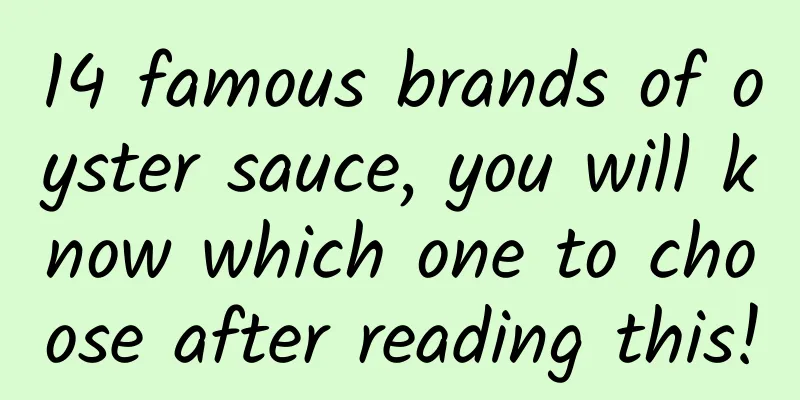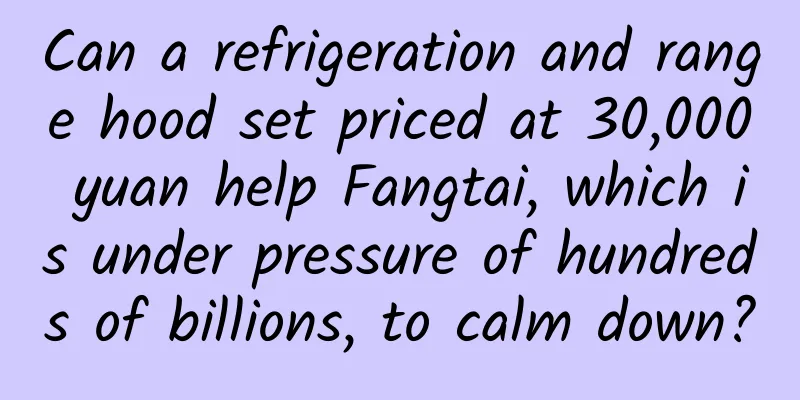14 famous brands of oyster sauce, you will know which one to choose after reading this!

|
A delicious life is inseparable from seasonings. Oyster sauce is a very practical one when cooking at home. No matter how good your cooking skills are, as long as you add a spoonful of oyster sauce to the dish, it will immediately be full of freshness and fragrance. But facing the various oyster sauces on the shelves, do you know how to choose? Is it true that the more expensive the better? Is it true that cheap products are not good? How can I buy oyster sauce that is genuine and worth the money? Today I will sort out 14 big-name products for you, including Lee Kum Kee, Hai Tian, Xinhe, Luhua and Chubang. The "invention" of oyster sauce was purely accidental. Lee Kum Sheung, the founder of Lee Kum Kee, forgot the time when boiling oysters, and ended up boiling out a brown thick liquid, which was the prototype of oyster sauce. It can be seen that oyster sauce is different from fermented condiments such as soy sauce and fish sauce. It is a product of the Maillard reaction and produces a richer and fuller aroma. Fresh oyster meat is added with water and salt, and then steamed and concentrated to obtain oyster juice, which is then combined with other ingredients to form the oyster sauce that everyone buys. The first factor that determines the quality of oyster sauce is the content of oyster juice. Of course, the more oyster juice there is, the more expensive it is. On food labels, the content of main ingredients needs to be arranged in descending order, that is, from most to least, so you can roughly judge the quality by looking at the ranking of oyster sauce. The higher it is, the better it is usually. Note: Sort by price from high to low (net content factor taken into account). The data comes from the price of a single bottle of similar specifications in the flagship stores of various brands on Tmall. The price coefficient is based on the cheapest product. Due to the influence of different sales channels and promotions, this list is for reference only. As you can see, the price generally reflects the amount of oyster sauce used, so “you get what you pay for”, and there usually won’t be too many problems when choosing based on price. Of course, if we simply compare the taste, the more expensive ones are not necessarily better than the cheaper ones. After all, if there is not enough oyster juice, you can use MSG to make up for it. There are a few things that need to be mentioned here. The most expensive Jiuzhuang oyster sauce is almost twice as expensive as the second most expensive one, and 7 times more expensive than the cheapest one. It is considered a super high-end product among oyster sauces, a real luxury oil. But from the ingredient list, we can see that it is expensive for a reason: it is the only product that has water as the third ingredient. (The second ingredient of Zhenpin Oyster Sauce is soy sauce, which is actually water-based.) The price is so high, but it has no competitors in this category. If you have a high pursuit of quality of life, this should be the right choice. The remaining four products with oyster sauce ranked first (Shengxian, Zhenpin, Caishen, and Jinbiao) can be considered high-end products. But in fact, it is difficult to distinguish between them, because the order of the ingredients list is only a rough reference. For example, oyster sauce 90%, water 10% and oyster sauce 60%, water 40% are the same in the order of ingredients. (Similarly, it is impossible to distinguish the oyster sauce ranked second) Since we can't see the actual ratio of the ingredients, assuming that you get what you pay for, the fresh oyster sauce obviously uses more ingredients than the other three. Zhenpin and Caishen are of the same grade. Although Gold Label is slightly inferior, its cost-effectiveness should be higher than those of the same price range, and it is also more cost-effective than the more expensive signature red oyster sauce. The one that looks least like oyster sauce among these 14 products is Jinzhen Fresh Oyster Sauce. It is the only one that ranks fourth in oyster sauce, with less than salt. The key is that it is not cheap, so it should be very cost-effective. I used to buy this frequently. Of course, one point that needs to be explained is that the "oyster juice" used by different households may not have the same concentration, but this has little impact on the previous analysis. In addition, different brands also have some interesting product strategies. For example, some brands tend not to add caramel color, some brands tend not to add preservatives, and some brands do not add flavor nucleotides or xanthan gum. These product “features” may influence consumer choice, but do you know what they actually mean? 1. Regarding caramel color, it is similar to adding a little bit of dark soy sauce. It can color the dishes when cooking. There is no problem with that. 2. Regarding preservatives, since oyster sauce needs to be used for a long time after opening, it is normal to add preservatives. Most products recommend refrigerating after opening, but how many people refrigerate? Sorbic acid is a common preservative, which is a natural substance in plants and is very safe. 3. Regarding flavor nucleotides, I don’t understand why some brands insist on not adding them? Flavor nucleotides can greatly increase the umami taste of amino acids, which means that sodium intake can be reduced with the same umami taste. 4. Regarding xanthan gum, it is a thickener obtained by microbial fermentation. There is nothing wrong with it. Isn’t it just soluble dietary fiber? And all oyster sauce products need to add thickeners. Check to see if there is "hydroxypropyl distarch phosphate". To sum up, as I have repeatedly emphasized, you should be cautious of any product claiming "no additives" or "0 additives". Most of them are commercial gimmicks carefully designed to create product differentiation, and most people simply do not have the ability to identify the secrets. So what you really need is to learn to read the product ingredient list and nutritional label, and face the truth behind the exquisite packaging and marketing routines! Finally, as a seasoning that adds the finishing touch to cooking, its usage is quite small, so there is no need to worry too much about a few cents or dollars. As long as the economic conditions allow, it is recommended to choose products with a mid-range price or above. Remember, no one has gone broke because of eating too good a seasoning. Trivia Particularly plump oysters are often triploid and infertile. Their gonads are not developed or are underdeveloped, so all their nutrients are used to grow their bodies. |
<<: Eating this fruit raw may lead to parasite infection!
>>: A bright star seen in the Southern Hemisphere reveals an ancient collision in the Milky Way
Recommend
French students design radiation-proof underwear to prevent smartphones from killing sperm
Mobile phones emit radio waves, and whether the u...
The top ten technology trends in 2023 are coming! Big companies tell you these key points!
The past 2022 was a wonderful year. We saw the in...
China will launch the "Einstein Probe Satellite" to survey and locate black holes in the universe
Recently, the Chinese Academy of Sciences announc...
Metaverse NFT Industry Introductory Course (MPC)
Metaverse NFT Industry Introductory Course (MPC) ...
8 attempts to introduce you to iOS lean programming
[[153315]] Opening Today, we will start with a sm...
Why does the watermelon in the refrigerator smell like leeks?
The refrigerator is a weird place. A half-eaten w...
YouTube video brick-moving money making project, use Xigua video to realize rapid monetization
YouTube video brick-moving money making project, ...
As a human being, is it shameful if we can't outrun a Tyrannosaurus Rex?
If you evaluate it in one sentence The plot of th...
7 simple ways to quickly understand user dads through online data
No matter what kind of marketing we do, we need t...
This thing is often seen on the dining table. Be careful of its "explosive" temper
Audit expert: Zhou Hongzhi Senior Experimentalist...
Operating Douyin Enterprise Account, these 7 tips are worth learning
With its powerful ability to bring goods, Douyin ...
A fast integration framework: MVP+Dagger+mainstream framework, it is enough
Preface In the Android technology circle this yea...
User operation: Can you survive without growth?
Introduction: " Refined user data is not obt...
Mobile Internet Channel Promotion Methodology (with case studies)
Friends often ask me that they spent a lot of mon...
Lu Mingming's "WeChat Group Precision Traffic Drainage Training Camp 3.0" uses WeChat groups to conduct traffic diversion operations and create a private domain traffic pool
Course Contents: 1. Understand the advantages of ...









